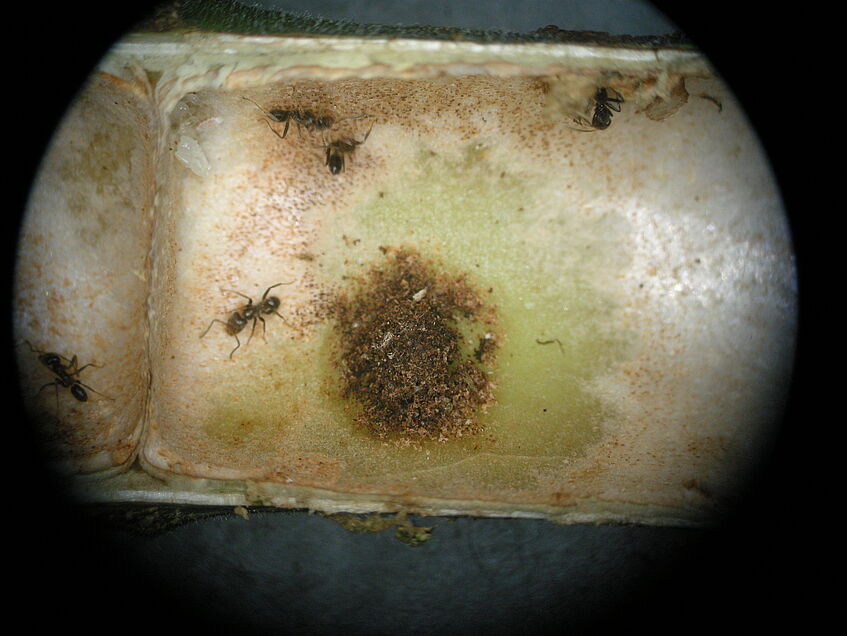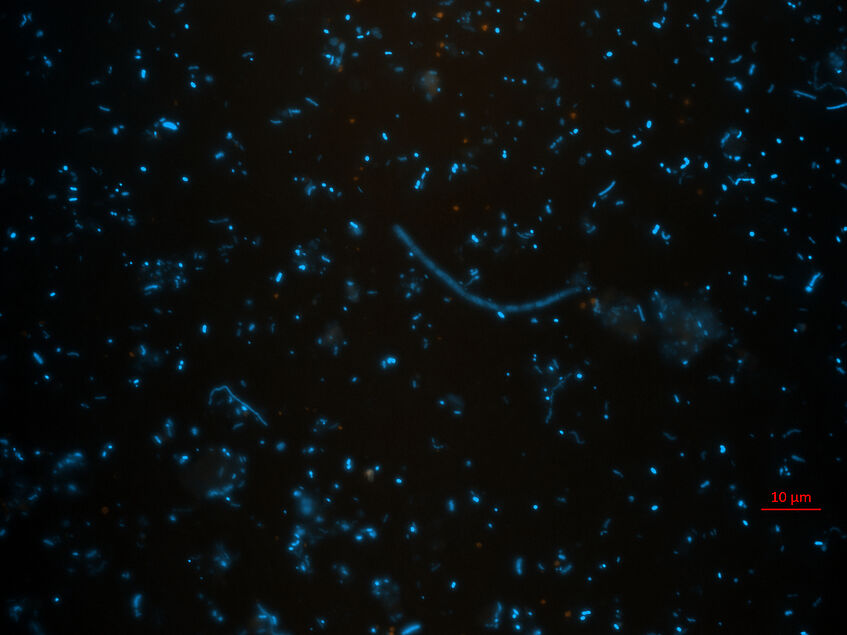Microbial community analysis in the neotropical ant-plant association: Azteca spp.-Cecropia spp.
- Dipl.-Biol. Dr. Veronika Mayer
- Kooperationen: Ass. Prof. Dr. Dagmar Woebken
Mag. Max Nepel
Mag. Dr. Hermann Voglmayr

Fungal patch in a hollow Cecropia sp. stem (© V. Mayer)

Bacteria in a fungal patch of an young Azteca colony (© Nepel & Mayer)
Apart from chaetothyrialean fungi, cultivated in patches in the domatia of ant-plants, a high amount of bacteria occurs. As ants secrete fungicidal and bactericidal substances from their metapleural glands as a general defence against pathogens the microbial community the microbiome may be rather specific and adapted to the ant-shaped environment. The fungal, bacterial and archaeal communities of the patches cultivated by Azteca ants living in Cecropia stems are analyzed through culture-independent sequencing of the ITS rDNA region (fungi) and the 16S rRNA genes (bacteria and archea) and fluorescence in situ hybridisation (FISH).
